THE MUSI AND LEONARD PHILOSOPHY: BIGGER IS BETTER
Former mountain motor Pro Stock racers Pat Musi and Sonny Leonard
learned a valuable lesson back in the 1970s when both 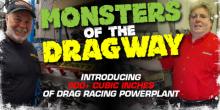 raced mountain
motors under the IHRA sanction. There’s no substitute for cubic inches,
even if you have 903 of them to throw around.
raced mountain
motors under the IHRA sanction. There’s no substitute for cubic inches,
even if you have 903 of them to throw around.
The two engine builders might come from different areas of the country,
Musi in Carteret, N.J., and Leonard in Lynchburg, Va., but both have
found a common ground in that the time has come for mega cubic inch
engines to chart territory once deemed untouchable.
If this modern day horsepower Lewis & Clark have their way, they’ll explore upwards into the 930-inch territories with 1,000-inches on the not-so-distant horizon. These engines will begin with 5-inch pistons and a 5.300 bore spacing.
Be prepared the 900-inch engines are headed to fast doorslammer racing …

The two engine builders might come from different areas of the country, Musi in Carteret, N.J., and Leonard in Lynchburg, Va., but both have found a common ground in that the time has come for mega cubic inch engines to chart territory once deemed untouchable.
If this modern day horsepower Lewis & Clark have their way, they’ll explore upwards into the 930-inch territories with 1,000-inches on the not-so-distant horizon. These engines will begin with 5-inch pistons and a 5.300 bore spacing.
Credit the advancement of bigger and better engine blocks with the ability to create a more reliable mega-inch engine.
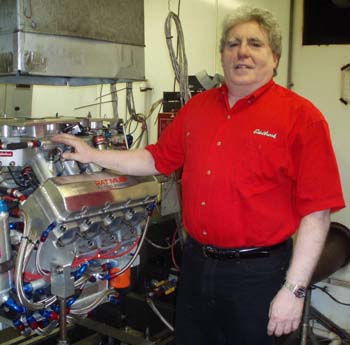
Until now, both engine builders pretty much had their hands tied and were vastly limited on bore and stroke.
“What has opened up this ability has been the block technology,” Musi said. “In the past we were trying to fit ten pounds of crap in a one pound sack. We used to not have billet blocks available and you couldn’t really spread the bore spacing. When you have the top engine builders told if we design the block, they’ll make it – that opens up a whole new avenue to expand. That creates a whole new scenario than in the past where we only had a Donovan block.
“No one was thinking bigger but now that the playing field is open, with a billet block, the sky is pretty much the limit.”
Musi said almost a year’s worth of thought process and preparation went into this engine they believe will revolutionize the ADRL’s Pro Nitrous and Extreme 10.5 divisions as well as the various fast doorslammer venues throughout the world. Depending on the rules package, they could work in the ADRL’s proposed Extreme Pro Stock division.
“We took a year off from racing and really did our homework on this program,” Musi said. “I think it will be the best piece out there once we get a few teams running it. It’s designed to be user friendly and lighter than anything its size. We’ve done our homework.”
a d v e r t i s e m e n t
Click to visit our sponsor's website
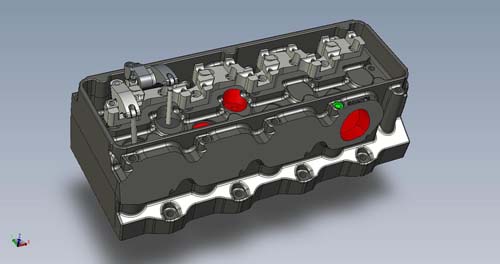
One area they’ve done their homework in has been in the valve train and this largely in part to the inclusion of Danny Jesel of

The Jesel drivetrain, said Musi, works perfectly with the 5.00 bore spacing symmetrical port wedge head first crafted by Leonard back in 1995. In fact, it was at Musi’s urging that Jesel prepared a special valvetrain with the Sonny Leonard heads.
Sonny's has designed the 5.300 bore spacing GM wedge symmetrical port head to accept 2.750 intake valve and 2.000 exhausts to accommodate 5.000 bore piston. All 18 head studs are in the deck of the block for quick head removal at the track. The chamber can be shaped to yield 120 cc's.
If anyone knows the merits of this union between Sonny’s and Jesel, it’s Musi because he used this combination to win multiple championships in the Pro Street ranks.
Before the do-it-yourselfers jump up and grab your Summit or Jegs catalogs or head out to the local N.A.P.A. store looking for parts to build one of these behemoth power plants, be advised most of these parts are custom built. Those they didn’t build in-house are joint ventures with many of the major manufacturers such as Jesel and Sonny Bryant, to name a few.
“Most everything we do is custom made anyway,” Leonard added. “The block, crank, cam and manifold are. ”
For now larger carburetors are in the future, however Musi is awfully high on the merits of electronic fuel injection with these larger engines.
“You really can’t mount a carburetor large enough for these engines and with electronic fuel injection, essentially the sky is the limit,” Musi said. “We just make the throttle body larger and the injector better and there you go. This engine will provide us with the opportunity to draw on the benefits of EFI”
Leonard builds many of the engines for the GM Mountain motor Pro Stocks competing in the IHRA, so he knows a thing or two about building custom parts.
a d v e r t i s e m e n t
Click to visit our sponsor's website
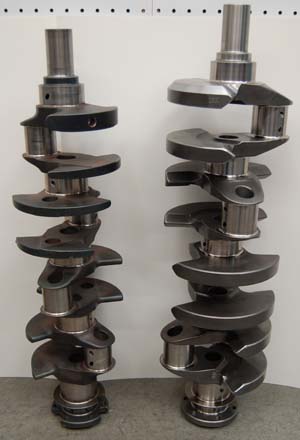
The bottom line Leonard says is weight. When you’re toting that many cubic inches every pound adds up and for him the wedge brings a lighter alternative to the hemispherical version.
“It’s not that you make more power from the Wedge, it’s just Wedge is about 35 pounds lighter and easier to remove from the engine in the car,” Leonard added. “The Wedge will be more user-friendly.”
Leonard would love to put his hemispherical cylinder head on the new engine line but isn’t keen on the weight his teams will have to spot the competition, not to mention that fact he’s went through great lengths to shave pounds here and there.
The 900-inch series engines will tip the scales at a reasonably “light” 670 pounds with water, and a solid version at an even lighter 650. This is the average weight for a mountain motor Pro Stock engine displacing much less. If you decide to go EFI, you can drop an additional 25 – 30 pounds.
“We’re just going to be bigger and better than everyone else out there, and we’re not copying anyone either,” Musi pointed out. “We’re just doing our own thing.”
There will actually be two of these engines built, with Leonard bringing out the first of the engines and Musi the second. While each builder will implement their personal touches, they will largely parallel one another.
The horsepower is one thing but the torque is a big beast a chassis had better be equipped to handle.
Leonard estimates the engine will generate in upwards of 1700 foot pounds of torque with nitrous. The goal in building these engines in to extract as many ponies as they can get.
That said, Leonard believes the time is rapidly approaching when fast doorslammers chassis builders should seriously look at revising the way they are building chassis. He’s firmly entrenched in his belief today Pro Stock/Pro Modified chassis configuration is at the edge of losing touch with the newer and larger engines being introduced.
a d v e r t i s e m e n t
Click to visit our sponsor's website
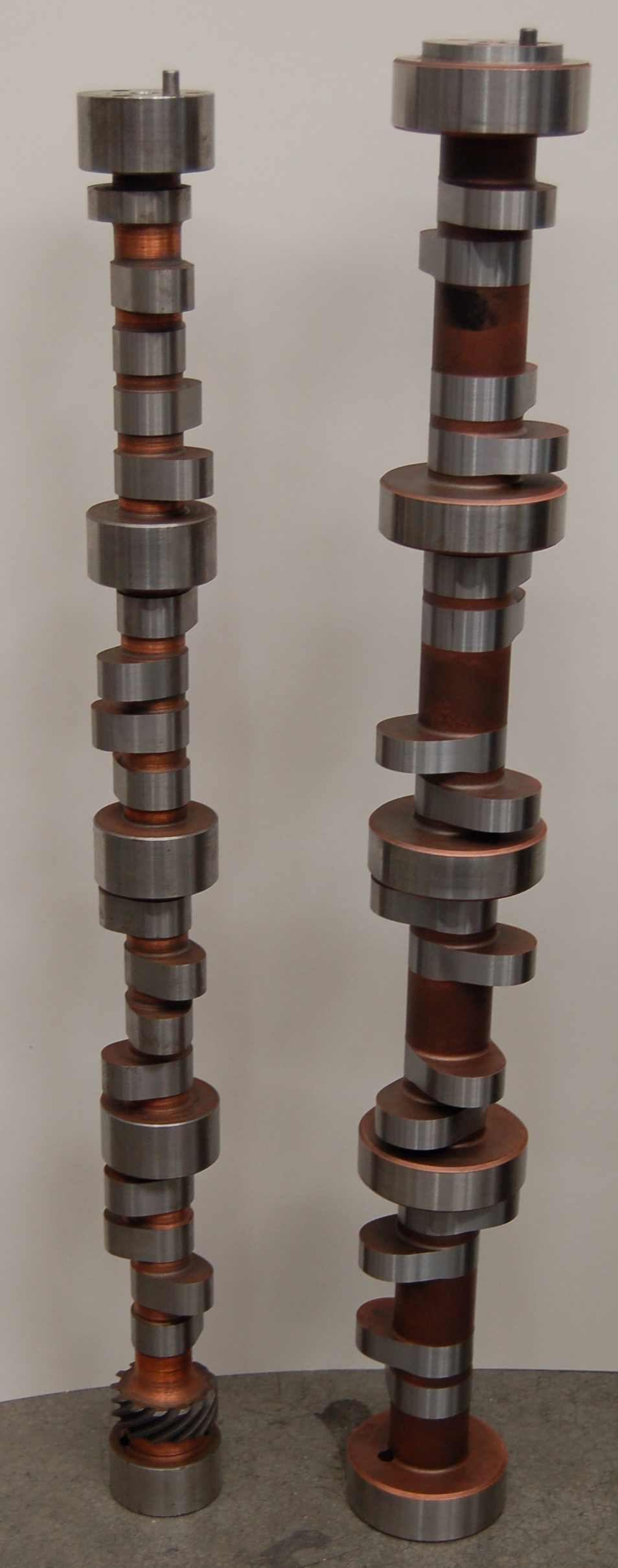
Leonard confirmed, over the past twenty years, the horsepower output has doubled on the mountain motor nitrous engine. Case in point, when doorslammer icon Bill Kuhlmann ran his 200 mile per hour run in Darlington, S.C., back in 1987, he did so with a 632-inch engine that pulled 1310 horses on a dyno. Today a nitrous car has run as fast as 240-miles per hour.
“You look at one of the leading nitrous Pro Modified cars and how many clean runs they get before they blow the tires off,” Leonard explained. “They have plenty of horsepower but 50% of the time they can’t get down the track. If they absolutely hit it perfect, they will fly. They are right on the edge.”
Leonard says the engine builders are doing their job in accommodating the racers who want more power.
“We’ve gone overboard to make more power,” Leonard admitted.
Musi believes any chassis shortcomings can be nullified through gear change and creative chassis adjustments.
“There are chassis out there are pretty good now. The problem now is that we are running gear ratios that we had with 720-inch engines,” Musi explained. “It’s going to take a different thought process to marry this large engine with a chassis in harmony.
“You wouldn’t take an IHRA Pro Stock car to a track with 3,000 altitude and take the same combination at sea level and try to run the same gear ratio. Why, in God’s name, would you add 500 horsepower to something, and not make any changes? That’s the follow the leader mentality in the works here. It’s going to take some pretty creative ratios to get this down the race track.”
Musi believes the recent performances of Pro Modified nitrous runner Jim Halsey proves that the mega-inch engines can run quick on a reliable basis.
“The large inch engines will run just as efficient in the quarter-mile as the eighth and I think Jim Halsey proved that,” Musi said. “Everybody thinks you can throw more at them in the eighth and you can, but just know they’ll easily go to the quarter too.”
a d v e r t i s e m e n t
Click to visit our sponsor's website
The current obstacle in the project, Musi believes, is a pool of teams to draw data from. The first team to line up for 900 Series engines will be longtime Musi customer and Puerto Rican doorslammer racer Hector Estrada and south Florida-based John Hall.
“The bad part of this whole deal is that we are limited in the racers we have taking a shot at this,” Musi said. “I credit [Gene] Fulton and [David] Reher in that they have some really good racers out there putting their stuff through the paces and doing it with essentially an unlimited budget. You gotta put something like this in the hands of someone with a decent budget who can test and work the details. This isn’t all about horsepower. This is about getting it down the track. Someone has to have a decent budget to make this work.”
That’s why the ADRL classes make the most sense to these engine builders.
“I really like the ADRL formula with the nitrous only concept,” Musi said. “That allows us to throw all of our stuff out there without something coming at us from the rulebook. That’s what I’ve been preaching for years. You don’t have turbos in Pro Stock. I love racing cars and not the rulebooks.”
Speaking of rulebooks, the ADRL’s Pro Nitrous rulebooks have no provision for cubic inch limit which means an engine of upwards in the 1,000 cubic inch range will be legal. The technology could support an engine that large.
But don’t expect such a monster to bring stellar results at this time.
“It can be done, but it won’t be very dependable at this time,” Leonard said. “One team wanted me to build one but I told him that it’s not very practical at this time.”
| {loadposition feedback} |






